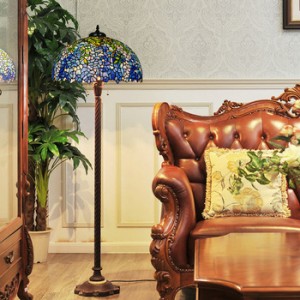Arranging furniture can be a daunting task. When you’re faced with an empty room knowing how to fill it can seem overwhelming. But all you need to do is follow these common sense rules and you’ll find that arranging furniture isn’t so scary after all.
Choose a Focal Point

Never underestimate the power of a focal point. Sometimes they appear naturally as windows or built-in mantels, while other times you create them yourself, as with media units and televisions.
Whatever your focal point is, make a decision and stick with it. You’ll need to arrange the furniture around it.
Don’t Push Furniture Against the Walls

The size of the room will dictate how far you can pull your furniture away from the walls, but even in a small room you’ll want to allow a few inches between the backs of furniture pieces and the walls.
It allows for breathing room and can make the room look a bit bigger. Of course if you have a larger space feel free to arrange seating areas in the middle of the room leaving several feet between the walls and the furniture.
Create Conversation Areas

People should naturally be able to talk to each other without having to crane their necks or shout across the room. You want the sofas and chairs to face each other (not necessarily straight on, but close), and they should be close enough that you can have a natural conversation with the person seated across from you without having to raise your voice. If the room is too large, create multiple conversation areas.
Find Balance

Balance is always important in decorating and when it comes to arranging furniture in your living room you’ll want to consider both size and placement of the various pieces.
Don’t group all the large or small pieces in one area of the room. Also make sure there’s variety in the shapes. If you’ve got straight-lined seating consider a round coffee table – or vice versa.
Consider Traffic Flow

People should not be tripping over furniture, or each other, to pass through the room.
Make sure there are a couple feet (give or take a few inches) between the coffee table and sofa, and between chairs.
Use the Right Size Rug

Area rugs belong under the furniture – all the furniture. Exposing some flooring around the edges of the room is fine, but when using an area rug you want to make sure it’s big enough that all the furniture in a seating arrangement can sit on it. At the very least you want the front legs of large pieces to sit on the rug (the backs can be on the floor if it’s absolutely necessary).
Get a Big Coffee Table

When it comes to coffee tables bigger is better. A large coffee table in the middle of a seating area is great for both aesthetics and function. It acts like an anchor for the room and it leaves plenty of space for people to put down drinks or to display favored accessories. It’s also easier to access from all the seats around it. That said, make sure to leave enough room between seating and the coffee table for people to pass through. And if you can’t find a suitable large coffee table, two smaller tables can be a good substitute.
Put Tables at Arm’s Length

Every seat should have easy access to either a side table or coffee table. People shouldn’t have to get up out of their seats to put their drink down. When it comes to table height, side tables should be approximately the same height as the chair arms they’re next to (if that’s not possible, lower is better). When it comes to coffee tables, the height should be the same height as chair/sofa seats or lower.
Let There Be Light

Lighting is one of the most important elements of any room and it’s often not properly thought out. Always use a mix of overhead lighting, floor lamps and table lamps (and sconces if you can). A floor lamp looks great at the end of a sofa or behind an accent chair. Table lamps look lovely on side tables, shelves, and even mantels. Lighting needs to be placed at different levels in order to be properly balanced so use it liberally throughout your room.
Use the Right Size Artwork

Things that are hung on the wall, whether it’s art, mirrors, or sculptural objects, need to be placed in relation to the furniture. Don’t hang a tiny photo over the back of your sofa. Use either a large piece that is approximately two thirds the length of the sofa, or use a grouping of pieces. If you’re absolutely determined to use a particular piece of art and it’s too small, put it in a larger frame with a large matte around it. (For every problem there is a solution!).
When it comes to arranging furniture it’s best to plan ahead. Either use an online floor planner or old-fashioned graph paper to sketch out your desired floor plan. It’s the only surefire way to know whether or not things will fit the way you want.
–ABOUT.COM

